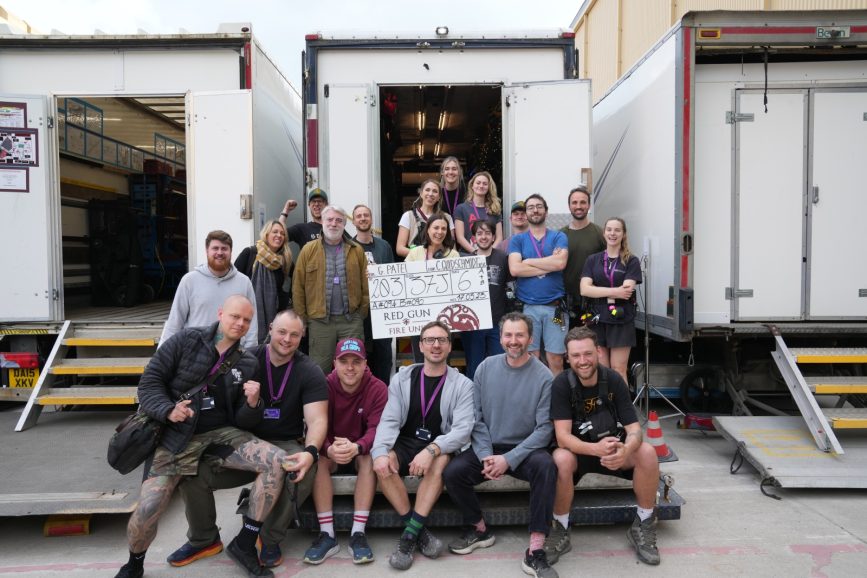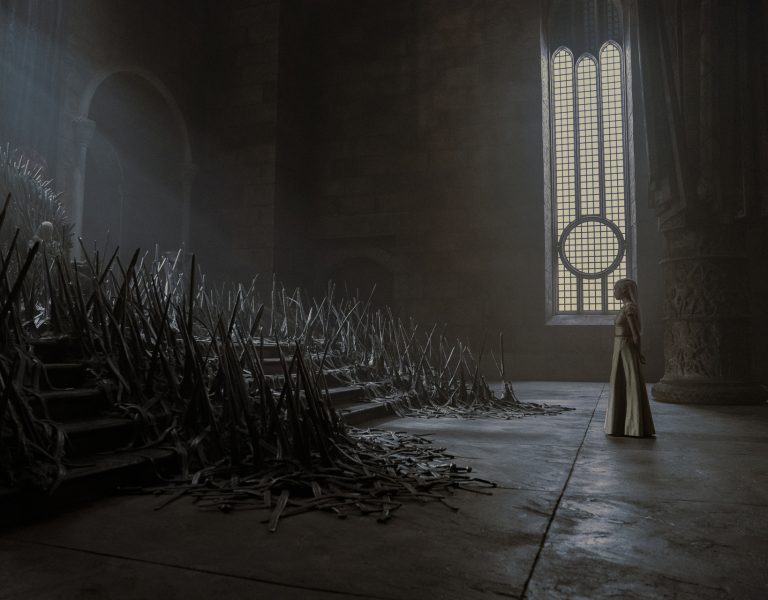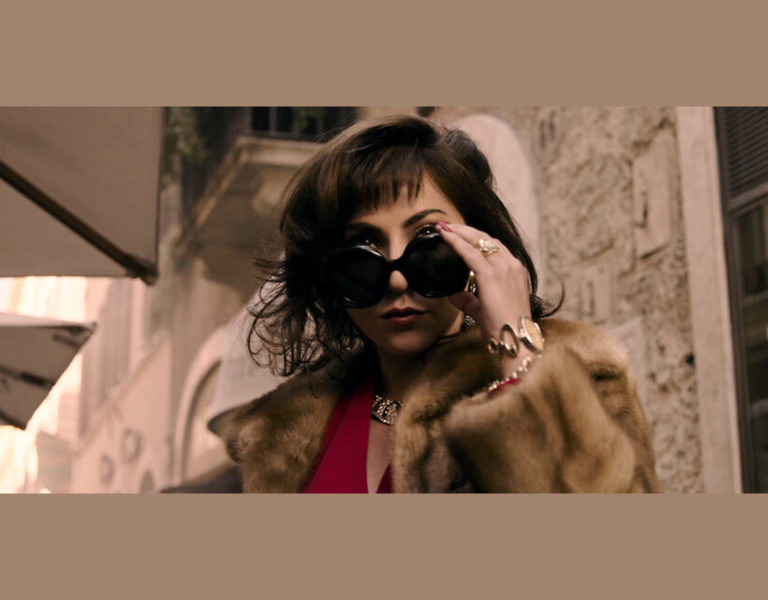THE WINGS OF CHANGE
The DPs on House of the Dragon threw caution to the wind, abandoning the old adage “if it ain’t broke, don’t fix it”. They opted for new cameras and discarded virtual production for the new series, daring to embrace change and innovation.
Creating a follow-up to a hit series is challenging, especially with the intricate universe of HBO’s House of the Dragon. As the prequel to the globally acclaimed Game of Thrones, this series had big shoes to fill. Airing on Sky Atlantic in the UK, its first season did not disappoint, captivating viewers with Targaryen politics and dragon lore.
So, for House of the Dragon season two, it made sense to call on the services of the cinematographers who helped make the first series so aesthetically pleasing.
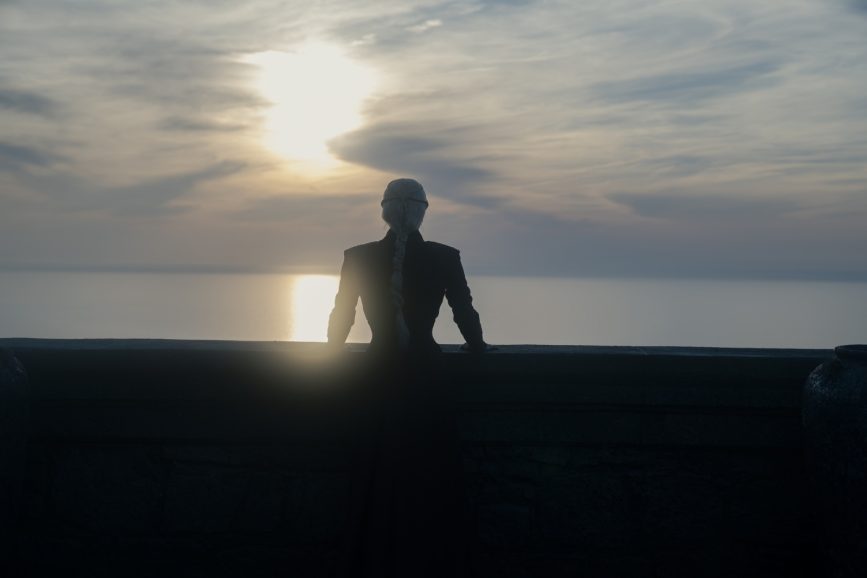
Catherine Goldschmidt BSC, who was handed episodes three and eight (the finale), says the team was ready to embrace change. The first series was a large format show, in which the A camera was the Alexa 65, while the B and C cameras were both Mini LFs.
“The Alexa 35 had recently come out, and we were all attracted to its increased dynamic range and sensitivity, so lead DP PJ Dillon ASC ISC shot a bunch of tests, and the results were great,” she explains. “The trade-off with Alexa 35 versus large format is that you are shooting a smaller, 35mm sized sensor – albeit a new and improved one! Because we didn’t want to lose the quality of the depth of field we had shooting large format – this led P.J. to explore anamorphic. He tested anamorphic and spherical, and all the DPs got together to review the tests and agreed that the ALFA anamorphics were the best choice for the show.”
Alejandro Martínez and Vanja Černjul also contributed to the series as cinematographers.
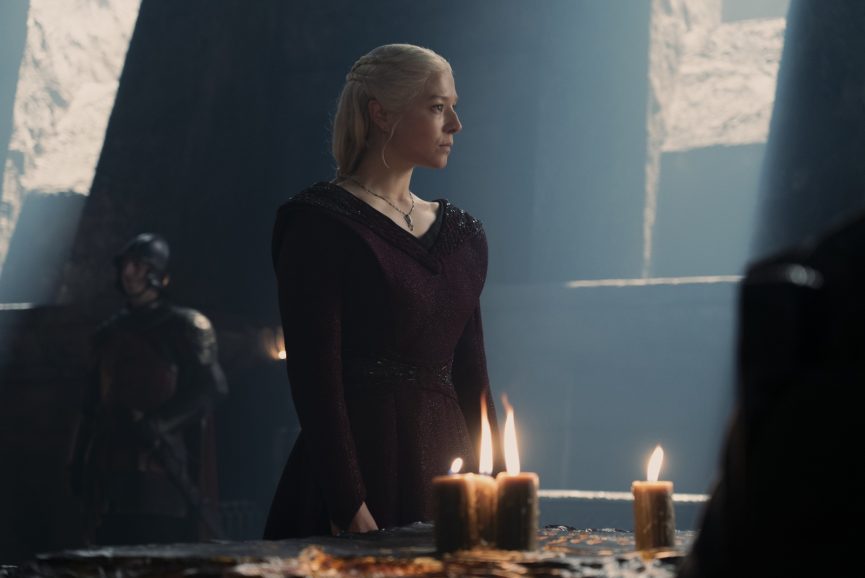
“The camera is amazing in holding highlights, which really helps when you’re on location,” Černjul says. “Since the industry switched to digital, it has been all about managing highlights. We had to move away from film-style lighting because, with film, you could use strong, practical source lighting without worrying too much about the highlights. Since switching to digital, we’ve been held hostage by the brightest point in the frame, making source-based lighting difficult. We had to light up the shadows to preserve the highlights. If you had one bright, practical light on the set, you had to light up the entire set to match the brightness of that practical source to keep the highlights inside of the dynamic range of the sensor. With this camera, ARRI has perfected the balance of highlights and shadows and made it possible to return to film-style lighting. This was very useful to us because the world of House of the Dragon is lit by torches and braziers, as well as bright sunlight penetrating the interiors through narrow, medieval windows. Seriously, if ARRI called me and asked me how the camera could be improved, I’d say I don’t know because it is pretty close to perfect. I would ask about the option of a large sensor, but I am sure that is coming.”
Despite the ALFAs being the primary lenses on the shoot, Černjul says ARRI Master Anamorphics were also used. “Sometimes, we needed a more predictable and cleaner image, so we carried a set of Master Anamorphics. If VFX needed the image to be more malleable in the post, we would switch to the Master Anamorphics for that particular shot,” he says.
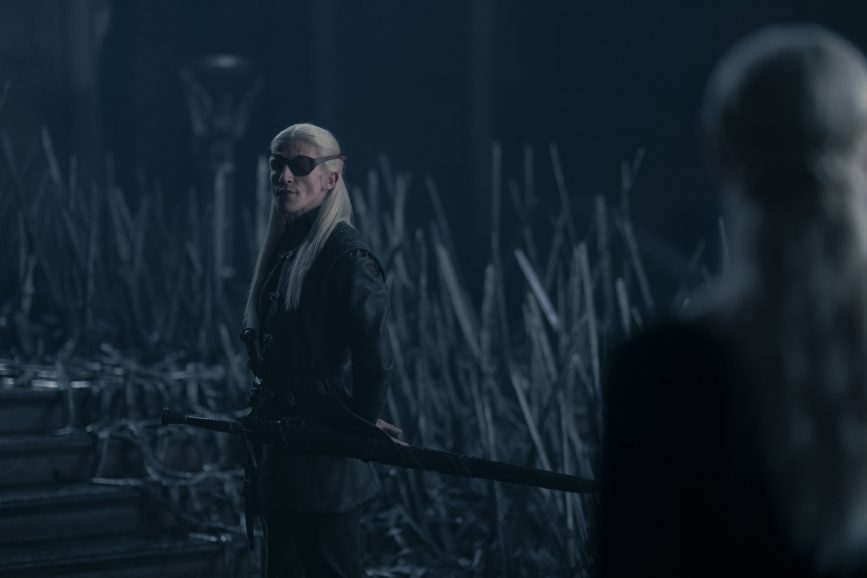
New look
Dillon says “the cinematography in season one was exceptional, but naturally, you have a desire to develop and progress things artistically and put your own mark on them” without changing things too much.
“Each DP had their own episodes to shoot, so their specific requirements differed from mine,” he explains. “However, the producers wanted to encourage a continuity of look across all the episodes in the season, so while I was encouraged to set the overall look, establish the tone and lighting style etc., we also had to ensure that within that general framework the other DPs had full creative freedom for their individual episodes. In practice, there was constant discussion and consultation between us all, with on-going feedback throughout the prep and shooting process.”
In practical terms, Dillon pre-lit all the sets. He, along with gaffer Charlie Cox, drew up the lighting plans and collaborated with the other DPs in advance to discuss their requirements. “Then we implemented the lighting plans on the stages,” he says. “Once the initial shape and lighting fixtures were in place, the other DPs had the freedom to adapt them to their specific needs. The key was to have the basic template in place for each set when they went on the floor. We prepped all of the sets for day, night and anything in-between, so that there could never be a situation where any DP wasn’t able to work with the fixtures we had put in place. That involved taking a modular approach, while relying heavily on LEDs for maximum adaptability.”
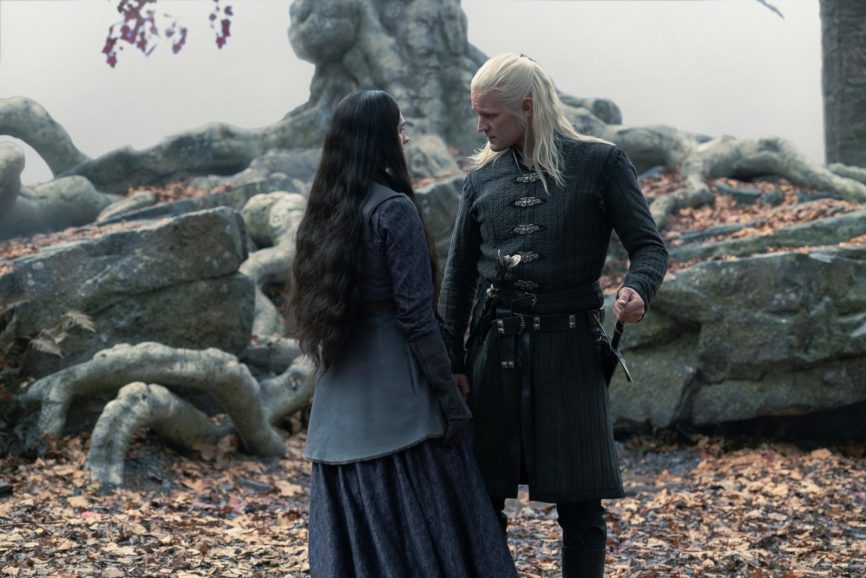
Goldschmidt says the team was “obviously still dealing with fire, moonlight, and daylight sources, but the actual tools used were different” this time.
“In season two we relied a lot more on LED sources, whilst season one was mostly tungsten,” Goldschmidt adds. “LED is definitely faster to control - you can change the colour temperature and intensity at the touch of a button, so it was attractive for that reason. Of course, it’s also a greener choice.”
Virtual production featured prominently in series one – partly because it was shot during the pandemic and partly because the plan was to give it a similar look to Game of Thrones. However, it was all but abandoned on this shoot.
“The volume was torn down entirely – the dragon flying was the most VP-like set-up,” Goldschmidt says. “We had almost 360 degrees of large LED screens and we projected on those screens animated skies, but they were used as a lighting source and they were never intended to be an in-camera background. They were there purely for interactive lighting.”
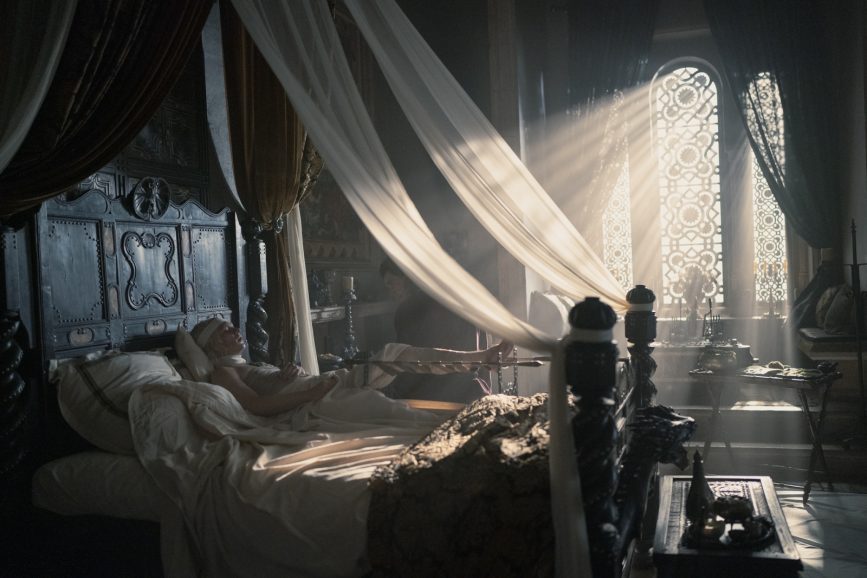
Enter the dragons
The dragon chase sequence in episode three posed the biggest challenge for Goldschmidt. “The VFX, stunts, and other departments had to collaborate closely,” she explains. “We spent a significant amount of time on that sequence because we struggled to find a suitable location. We needed a flat plain leading into a forest where horses could enter. It sounds simple, but either we found the right woodland without the ideal plain or vice versa. Eventually, we settled on Salisbury Plain.”
Key locations in the series included Spain, and Wales, where the shoot lasted five weeks.
Back to the subject of flying dragons, Černjul explains the modus operandi adopted in Wales. “It was my first time there, and I think Anglesey and North Wales are some of the most beautiful parts of Europe,” he added. “In a scene where the character Adam of Hull is being chased by his own future dragon, we drew inspiration from Alfred Hitchcock’s North by Northwest - the classic scene where Cary Grant’s character is chased by the crop duster,” he explains. “We analysed how Hitchcock shot that scene and used it to jump-start the process of shot listing. We employed various camera movements: a telescopic crane for transitioning from extremely high to very low angles, handheld for proximity to actors, DJI Inspire 3 drones for the dragon’s POV and Steadicam or dolly shots to keep pace with the very fast and athletic actor, Clinton Liberty.”
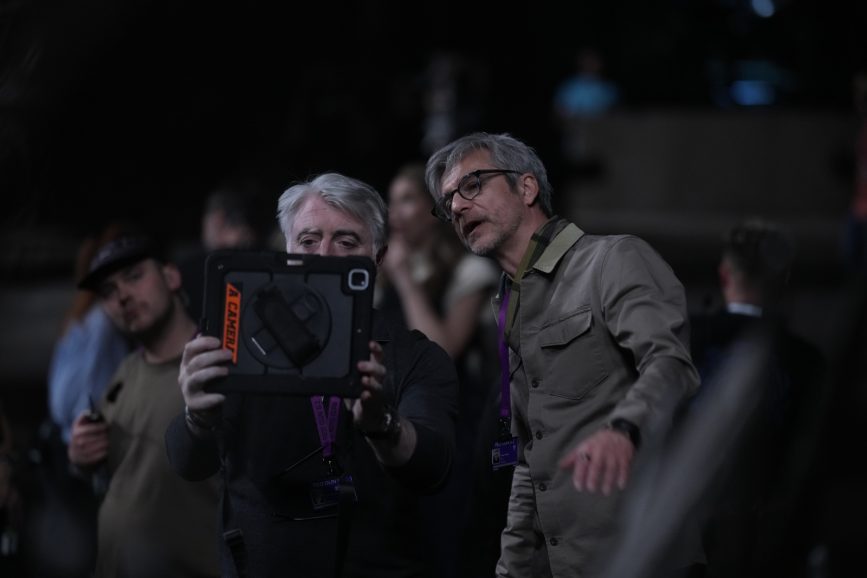
Goldschmidt adds that the complicated and choreographed Steadicam oner that introduces Ulf’s character in episode three is actually two shots stitched together- one that was shot on location in Spain and the other on stage at Leavesden. “Because of our shooting schedule, we had to shoot the interior piece first, which added an extra layer of challenge to match the speed and move on location,” she says. “The shot was executed with great skill by our two Steadicam operators – Ashlea Downes (stage) and Michael Carstensen (location) – and both shots were stitched together by our awesome VFX team headed up by Dadi Einarsson.”
That said, Černjul points out that shooting on location is “always a challenge” because of the elements. “We were filming at incredibly beautiful remote places in north Wales, and it was hard to bring large equipment with us because of difficult access, unpredictable weather, and extreme tidal ranges,” he says.
“House of the Dragon season 2 was a massive project with a very large crew, but every so often, because of the specificities of a location, we had to pare down to a skeleton crew to be able to move quickly and adapt to the conditions on location. Sometimes, you capture the most epic shots if you are at the right place at the right time, with just a tripod and a camera you hand-carried to the spot.”
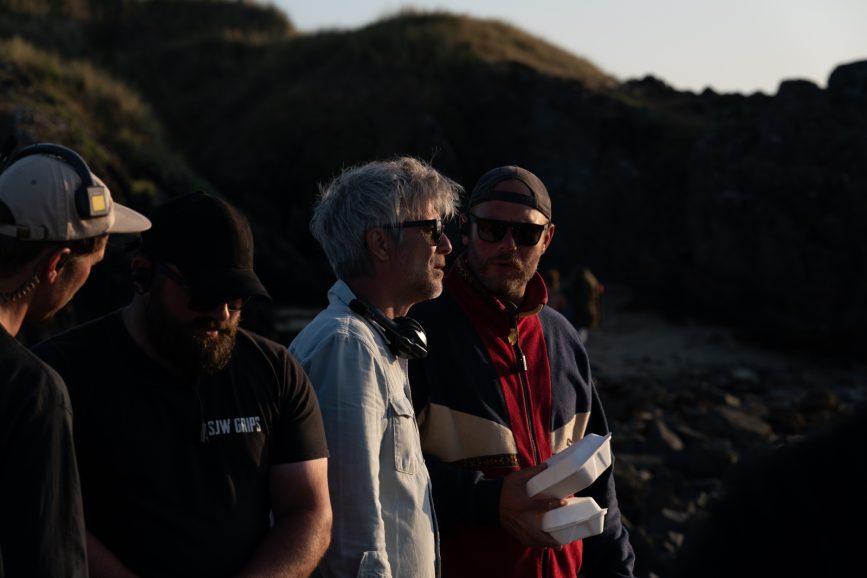
A prime example of hazardous conditions occurs in the opening scene of episode seven, set on the beach at Anglesey. It was inspired by the duel in Once Upon a Time in the West, featuring Charles Bronson as ‘Harmonica’ and Henry Fonda as Frank. “It’s one of the most iconic scenes from any Western ever,” he says. “Emma D’Arcy (Princess Rhaenyra Targaryen) was so excited – they said, ‘I didn’t know I was going to be in a Western.’ The scene was supposed to be set early in the morning, but, of course, we couldn’t shoot all of it in the morning. We split the shot list into two groups – one for morning light and one for afternoon light. Director Loni Peristere, our amazing first AD, Toby Ford (Game of Thrones), and I storyboarded shots and scheduled shooting blocks according to the sun’s position.”
However, that was only part of the equation.
“We learned that the tides were very violent, so we had to chart the entire scene not just for the sun’s position but also for the tide,” Černjul explains. “We needed to map out where the camera would be for each group of shots as we moved around according to the tide. Logistically, it was difficult to figure this out. We finally did, but a couple of days before we were supposed to shoot, we learned it would rain on the day. Because of the complexity of the schedule that had to work for five different director/DP/ AD teams, it was impossible to reschedule the scene, so we had to embrace the weather. As we started shooting, we realised that the rainy and foggy conditions at the beach were actually the best possible circumstances for this particular scene. We were thrilled by the results.”
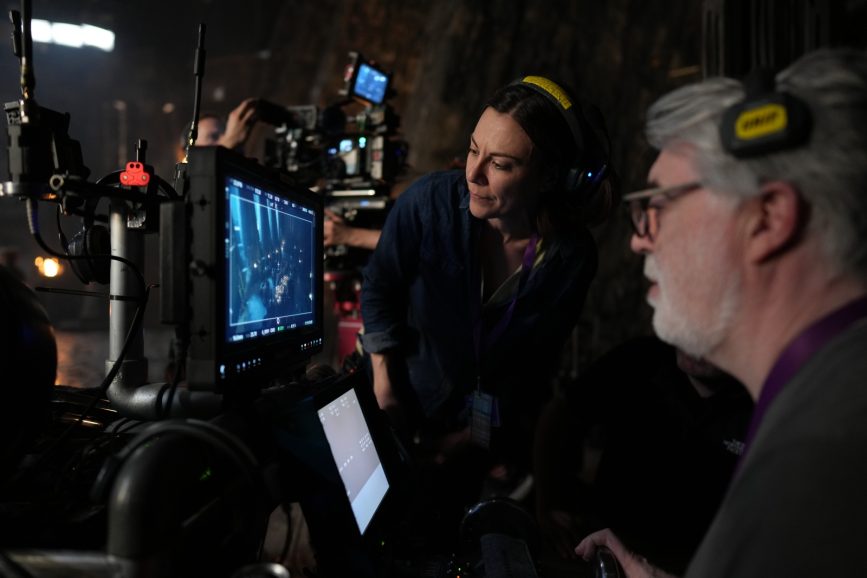
Goldschmidt says this season also incorporated a lot of motion control.
“We began by developing the dragon flying scene with a storyboard,” she adds. “Our storyboard artist created the initial images, which we delivered to previs. From there, we proceeded to animate the scene, undergoing multiple rounds of refinement. Subsequently, we integrated the camera movements into a motion control system, which managed both the mechanical buck and camera operations.”
For Dillon, the biggest single technical challenge was the dragon fight in episode four because there were so many elements. “It was shot over the course of two weeks in Bourne Wood—some days we had blazing sunshine, and other days it was lashing rain, so matching was challenging at times,” he says. “We then had to integrate the location work with all the VFX elements – dragon riders on a hydraulic buck shot against blue with LED walls providing interactive light. Making all of those elements look naturalistic and real was a real challenge.”
Another challenge Goldschmidt faced was in the finale. ”Prince Daemon Targaryen (played by Matt Smith) has this vision, and it was a really cool challenge because it’s entirely visual. There’s no dialogue, and the visuals need to be both abstract and tell a story,” she says.
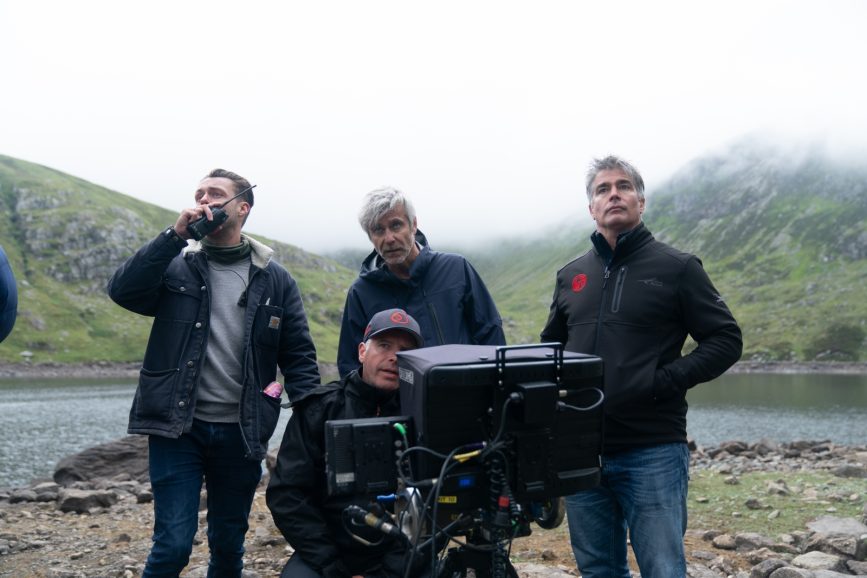
“There really wasn’t a script per se for this sequence, so Ryan Condal (showrunner) gave Geeta Patel (director) and me a lot of freedom to develop something visually powerful. It was fun because we got to delve back into Game of Thrones lore and incorporate symbols that would be meaningful.”
Goldschmidt says another big challenge to shooting the show are the complicated logistics involved.
“We had two full crews – two gaffers, two grips, two A-Cam operators, etc,” she continues. “Not only that, but all the episodes are shot concurrently, with all the directors and DPs sharing the same cross-block schedule. What got very confusing in season one was preparing with two teams called Fire and Blood. You’d prep a scene with the Fire unit, and then at the last minute, it would switch to the Blood unit. That meant having to translate all your notes and ensure they knew what was going on. It was really a communication issue. In season two, we were able to streamline that process more. I tip my hat to everyone involved in this colossal task including both amazing crews – Fire and Blood, the production team, and my fellow DPs.”
